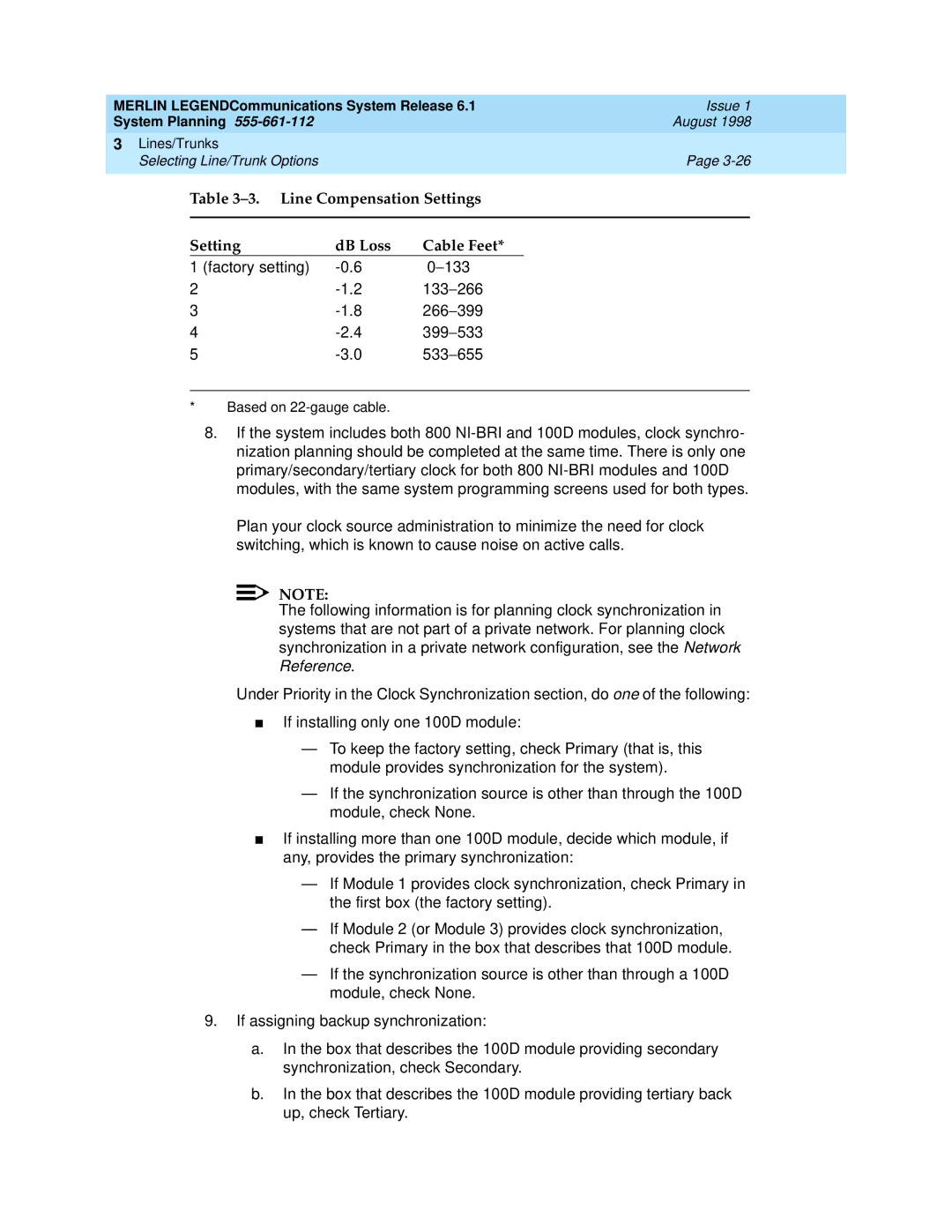
MERLIN LEGENDCommunications System Release 6.1 | Issue 1 | ||||
System Planning |
|
| August 1998 | ||
3 Lines/Trunks |
|
|
|
| |
Selecting Line/Trunk Options |
|
| Page | ||
|
|
|
| ||
| Table |
|
| ||
|
|
|
|
|
|
| Setting | dB Loss | Cable Feet* |
|
|
| 1 (factory setting) | 0−133 |
|
| |
2 | 133−266 |
|
| ||
3 | 266−399 |
|
| ||
4 | 399−533 |
|
| ||
5 | 533−655 |
|
| ||
*Based on
8.If the system includes both 800
Plan your clock source administration to minimize the need for clock switching, which is known to cause noise on active calls.
![]()
![]() NOTE:
NOTE:
The following information is for planning clock synchronization in systems that are not part of a private network. For planning clock synchronization in a private network configuration, see the Network Reference.
Under Priority in the Clock Synchronization section, do one of the following:
■If installing only one 100D module:
—To keep the factory setting, check Primary (that is, this module provides synchronization for the system).
—If the synchronization source is other than through the 100D module, check None.
■If installing more than one 100D module, decide which module, if any, provides the primary synchronization:
—If Module 1 provides clock synchronization, check Primary in the first box (the factory setting).
—If Module 2 (or Module 3) provides clock synchronization, check Primary in the box that describes that 100D module.
—If the synchronization source is other than through a 100D module, check None.
9.If assigning backup synchronization:
a.In the box that describes the 100D module providing secondary synchronization, check Secondary.
b.In the box that describes the 100D module providing tertiary back up, check Tertiary.
